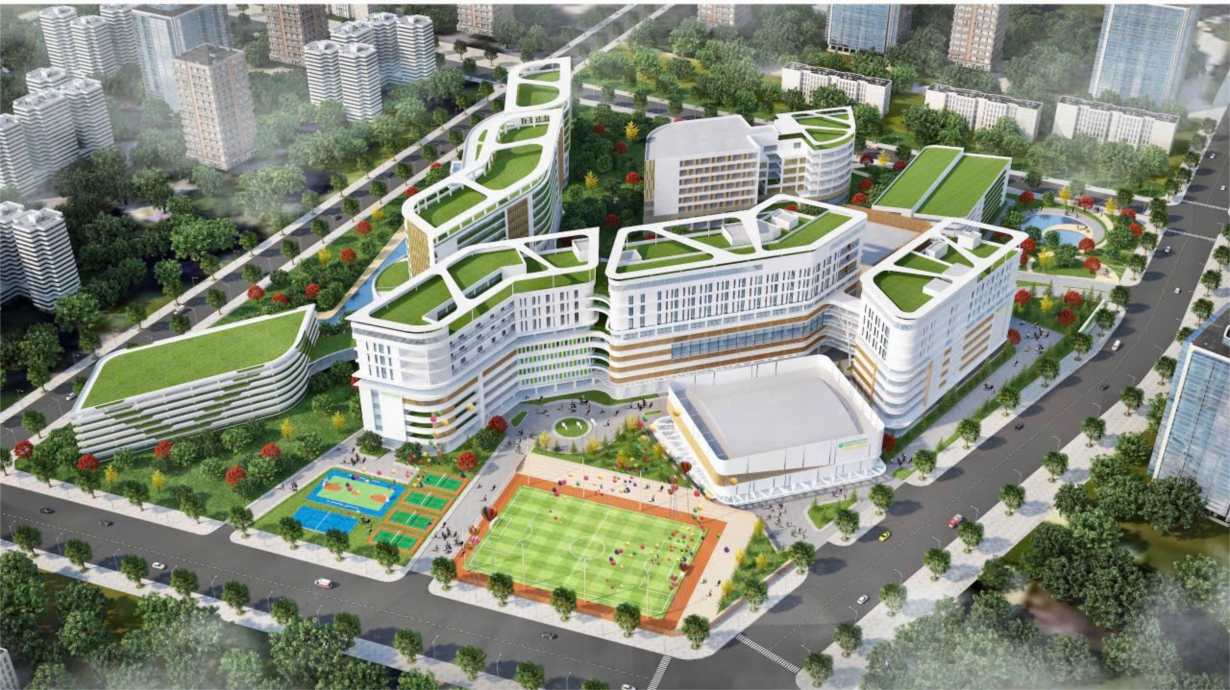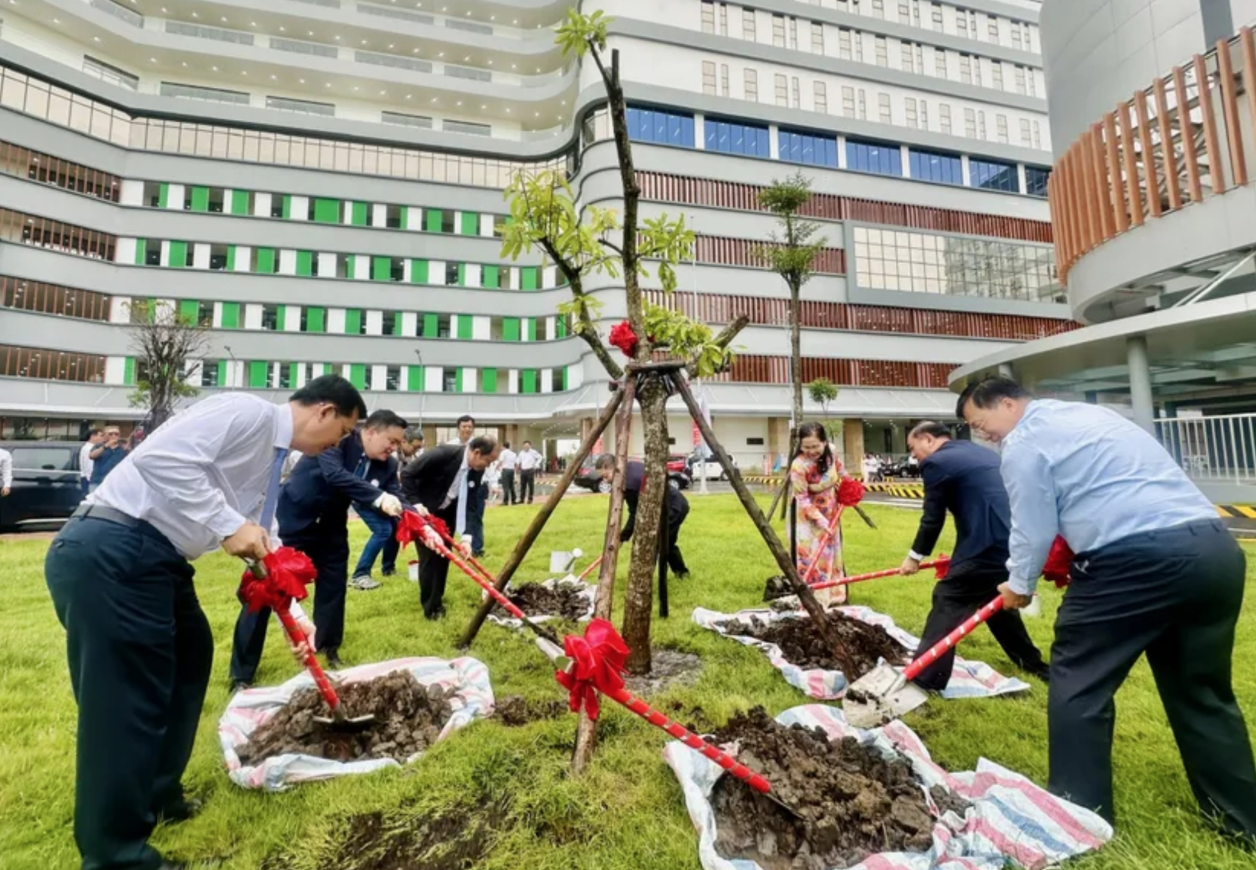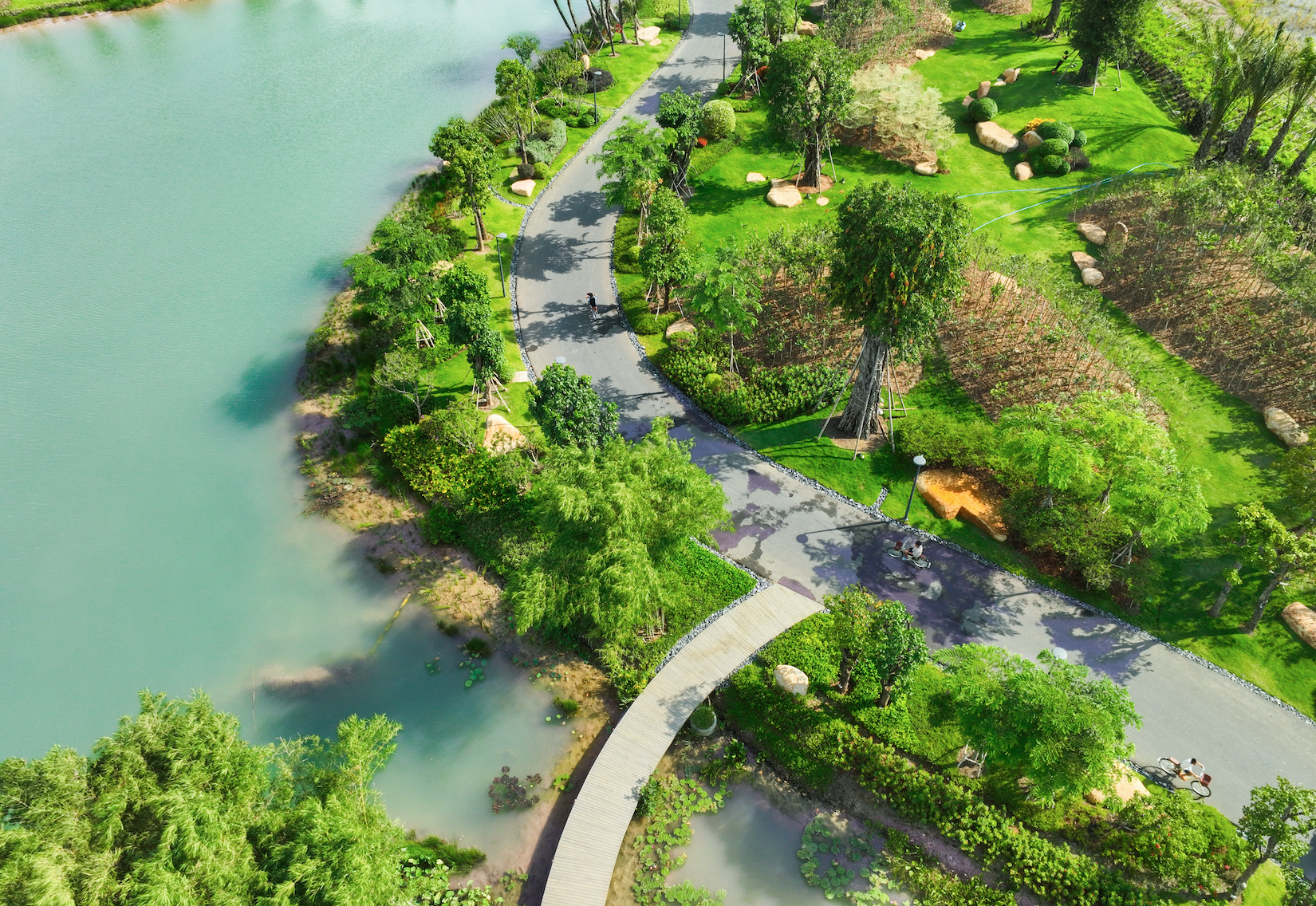A specialized healthcare cluster, featuring a modern hospital and medical school, is taking shape in Binh Chanh, Ho Chi Minh City. This is Vietnam’s first “healthcare campus,” introducing a new approach to healthcare that emphasizes the connection between people and the natural environment.
Recently, the Pham Ngoc Thach University of Medicine – the second facility within this “healthcare campus” – officially commenced operations. This event marks a significant step forward for medical education and is also part of the celebrations commemorating the 80th anniversary of National Day.

Pham Ngoc Thach University of Medicine at the Tan Kien Healthcare Campus. Photo: Ho Chi Minh City Department of Health
Healthcare Integrated with Green Spaces
The highlight of the Tan Kien “healthcare campus” is its “green healthcare” philosophy – the first institute-hospital model in the country planned according to international standards. Spread across dozens of hectares, the campus includes lecture halls, hospitals, research centers, a comprehensive transportation system, sports facilities, parks, and green landscapes.
After the first phase, Ho Chi Minh City is expanding the planning of the Tan Kien healthcare cluster from 55 hectares to 73 hectares, with key projects such as the 115 Emergency Center’s second facility, a 1,000-bed Orthopedic Hospital, a Blood Bank, a High-Tech Disease Screening Center, and a Practical Hospital for the Pham Ngoc Thach University of Medicine.
This area will be developed following the green healthcare model, featuring parks, sports fields, community service areas, and accommodations for patients’ families. The green spaces not only create a friendly and modern atmosphere but also support healthcare during and after treatment due to the positive impact of nature.
Mr. Vo Duc Thanh, Director of the Project Management Unit, emphasized: “Students, lecturers, medical staff, and even patients can find a balance between physical and mental well-being within this environment.”
As such, green spaces are considered therapeutic, helping to reduce stress and expedite patients’ recovery while also creating more effective conditions for learning and research.

The school campus is filled with greenery.
Nature – A Free “Prescription”
This trend aligns with global medical research. In Canada, the PaRx program, initiated by the BC Parks Foundation, encourages doctors to “prescribe nature.” More than 11,000 healthcare professionals participate, recommending that patients spend at least two hours a week immersed in greenery, parks, or outdoor spaces.
According to Dr. Melissa Lem, Director of PaRx, about 30,000 “nature prescriptions” are written each month, yielding noticeable benefits: reduced stress hormone cortisol and improved physical and mental health.
Numerous studies in Finland also indicate that individuals who walk in parks three to four times a week have 33% lower use of drugs for mental disorders, 36% less use of blood pressure medication, and 26% less use of asthma medication compared to those with minimal exposure to green spaces.

Nature – A free “prescription” for humans.
From Hospital to Healing Space
At the Binh Chanh “healthcare campus,” the planning goes beyond healthcare infrastructure, giving special attention to parks, sports fields, and accommodations. This approach not only serves medical examination and treatment but also helps patients and their families reduce stress and anxiety during the treatment process.
Dr. Doan Thu Hong, from the Institute of Applied Medicine in Vietnam, stated, “A hospital should not only be a place for curing diseases but also a place for comprehensive recovery, helping patients regain balance through a natural environment.”








































